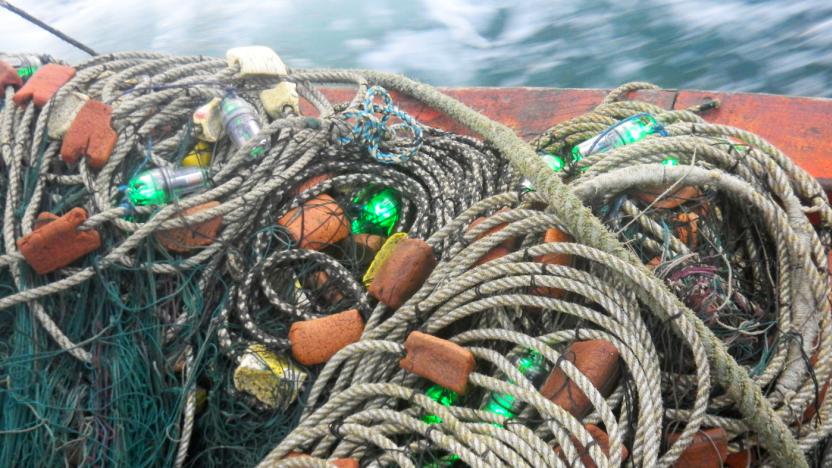seaturtle
Latest

LED-lit fishing nets save sea turtles from getting caught
Sometimes, it's the simplest tech that makes the biggest difference. University of Exeter researchers have crafted fishing nets with evenly distributed green LED lights (one every 33 feet) that warn sea turtles away without spooking fish. While scientists have yet to nail the exact reason the lights steer the turtles clear, one researcher tells Tech Insider that it's likely just a matter of visibility -- the turtles stand a better chance of seeing the net in time to avoid it. It's not only quite effective in early tests (it reduced green turtle deaths by 64 percent), but relatively cheap at $100 to cover a giant 1,640ft net with 50 lights.

ICYMI: Seeing CO2 from space, best arena selfie and more
#fivemin-widget-blogsmith-image-520649{display:none;} .cke_show_borders #fivemin-widget-blogsmith-image-520649, #postcontentcontainer #fivemin-widget-blogsmith-image-520649{width:570px;display:block;} try{document.getElementById("fivemin-widget-blogsmith-image-520649").style.display="none";}catch(e){}Today on In Case You Missed It: An app that syncs up with robotic cameras in sports arenas is up and running in a few locations in California. With it, attendees can get photos of themselves at the game after entering their seat number in the free app. NASA is beginning a long-term study into CO2 absorption on the earth, with the hopeful goal of better sequestering and controlling greenhouse gases. And a new report is out on the fluorescent eel discovery of 2011. While the same marine biologist has just discovered a fluorescent turtle, the eel report says the neon was likely selected to attract a mate.

Robot sea turtle will map shipwrecks that humans can't reach (video)
Some shipwrecks are too costly or dangerous for humans to explore, but many underwater robots are too disruptive and unwieldy to serve as substitutes. The Tallinn Institute of Technology's new U-CAT mapping robot solves that dilemma by imitating one of the ocean's more graceful creatures: the sea turtle. The small machine uses flippers to get around instead of propellers, preventing it from kicking up silt (which would obscure its camera) and letting it turn on a dime. It's also autonomous, which helps it venture deep into a wreck without worrying about cables. It's sure to have a big impact on underwater archaeology, and you can see it in person if you swing by the London Science Museum between November 28th and December 1st. However, It will eventually map shipwrecks in the Baltic and Mediterranean Seas as part of the EU's ARROWS Project, providing more detail than any diver could manage. [Image credit: Tallin University of Technology, Flickr]

